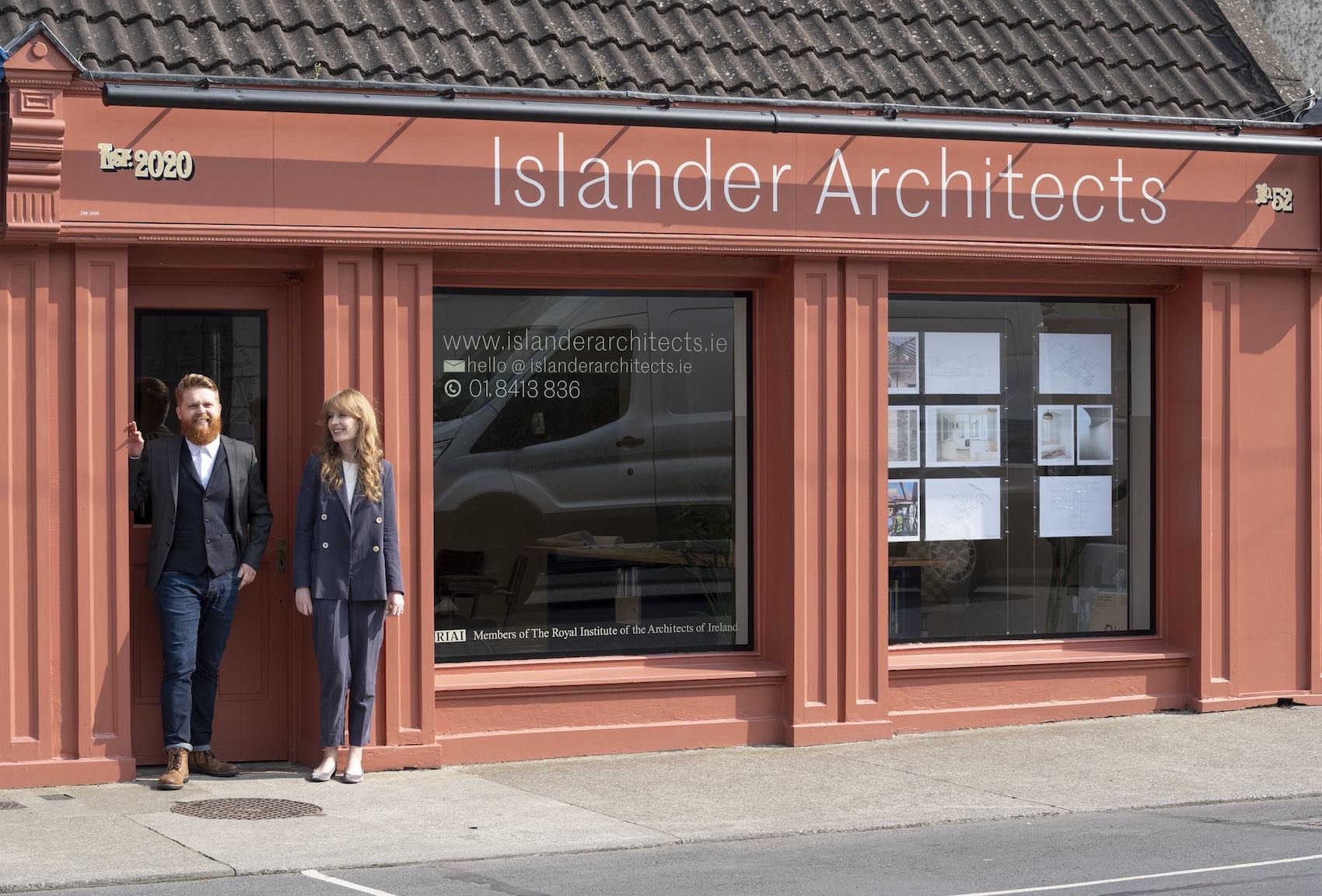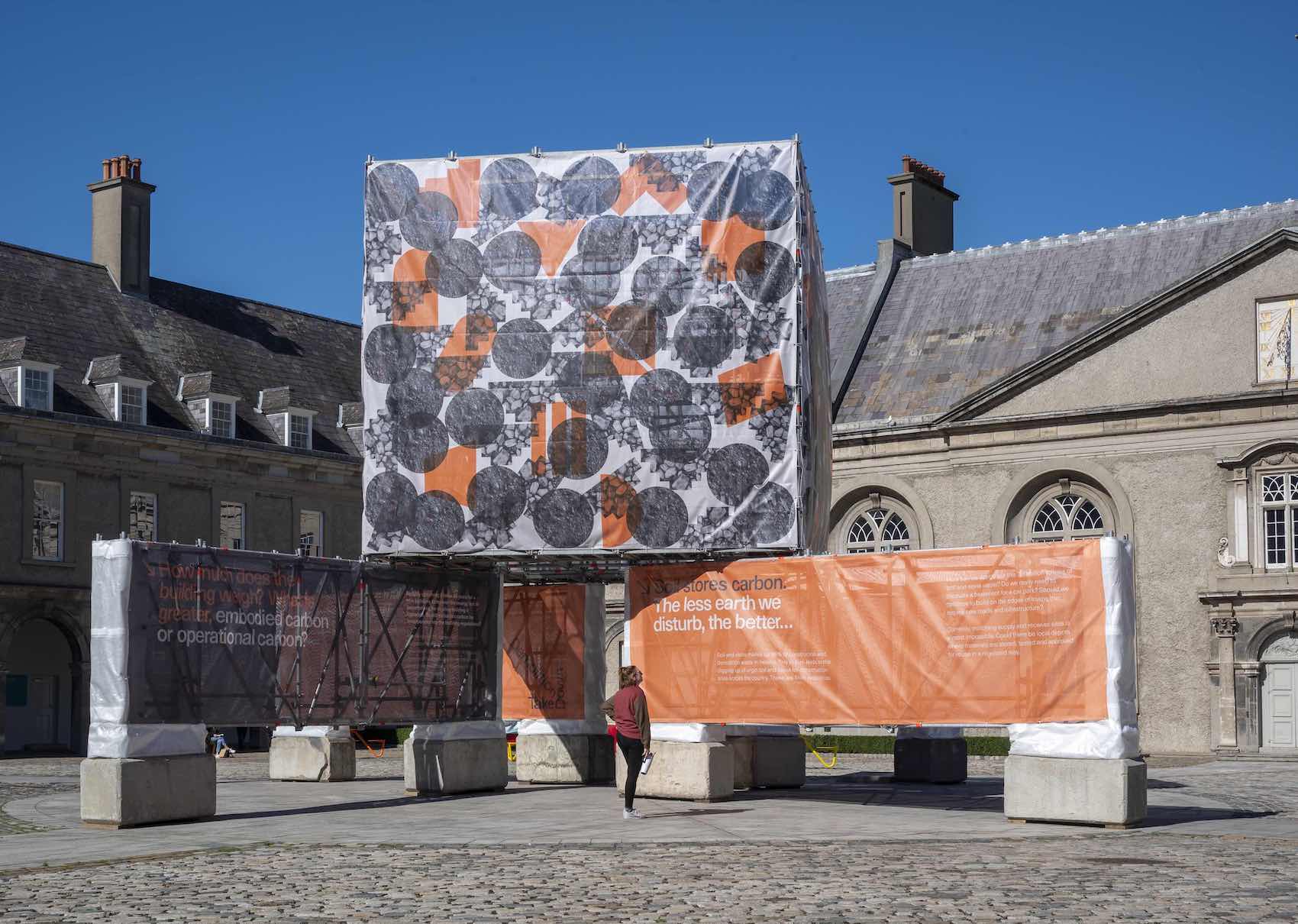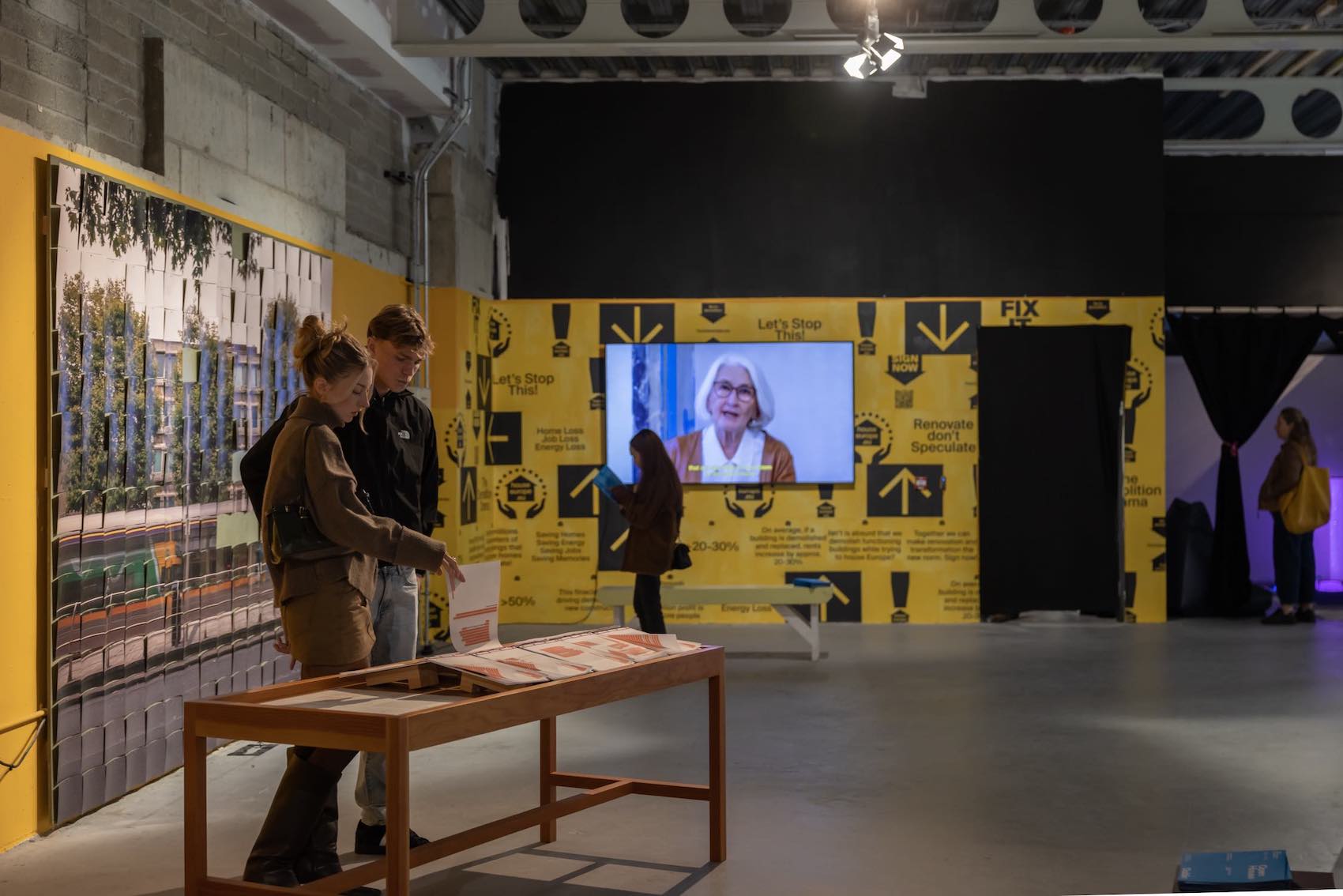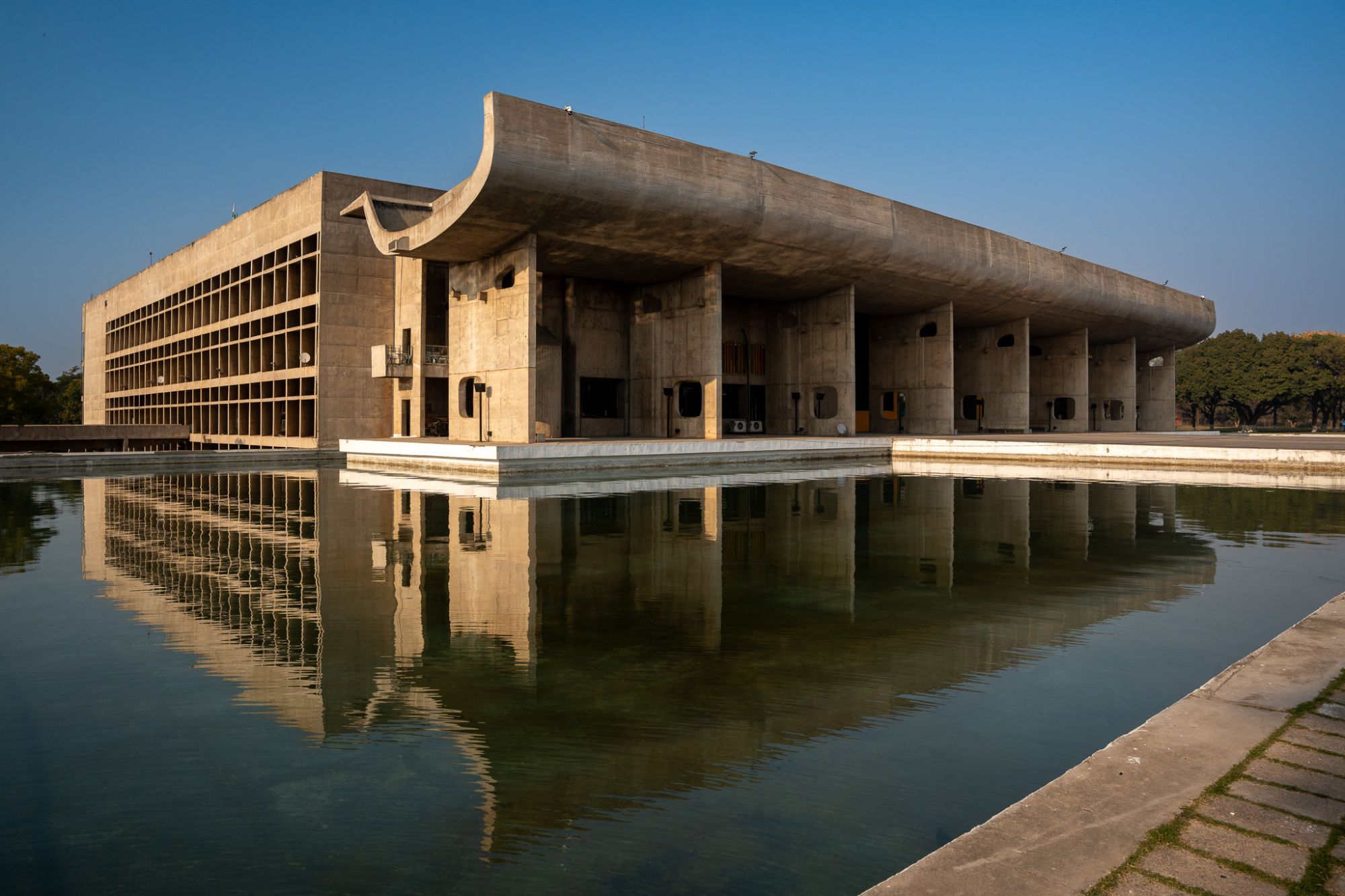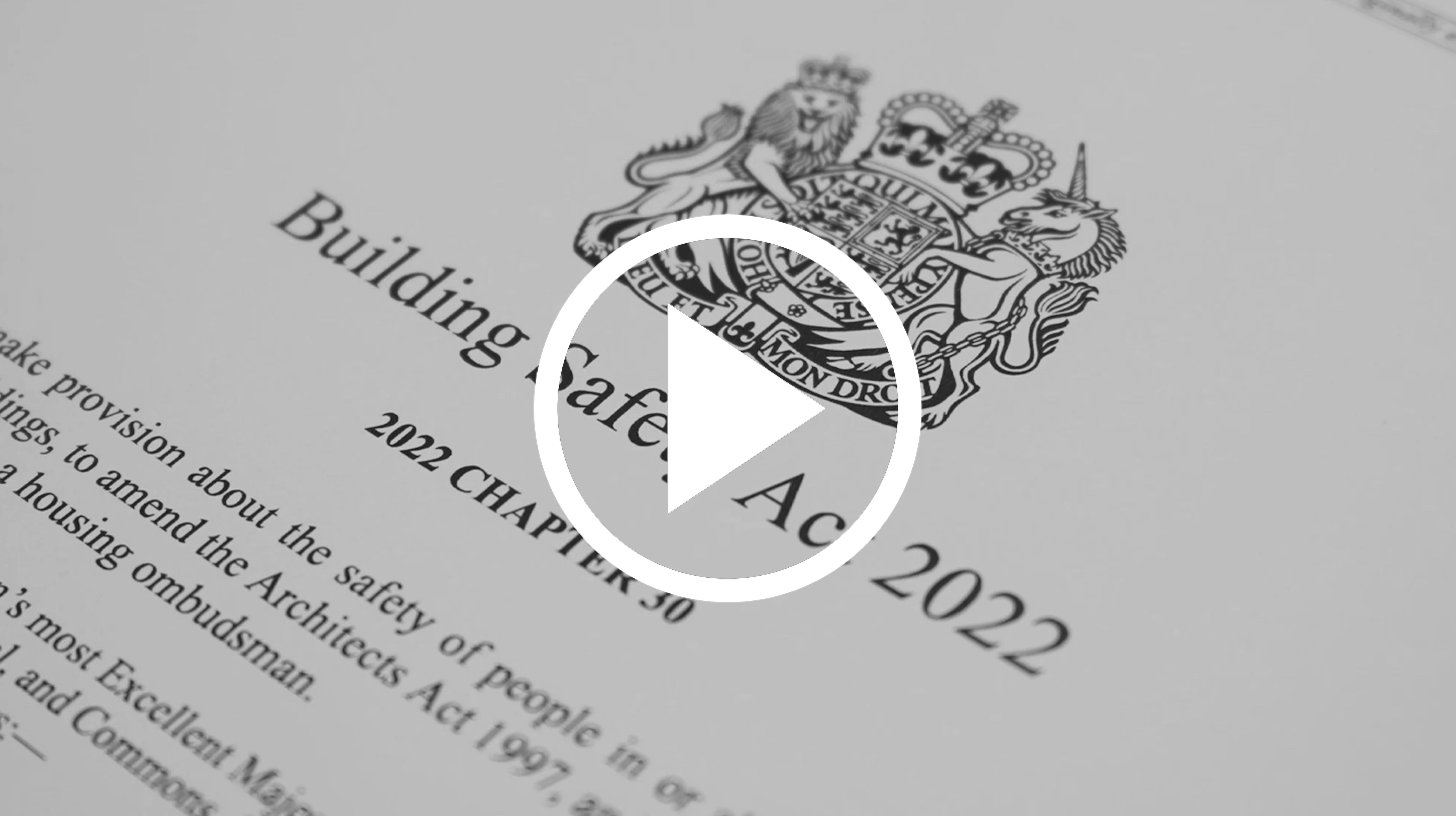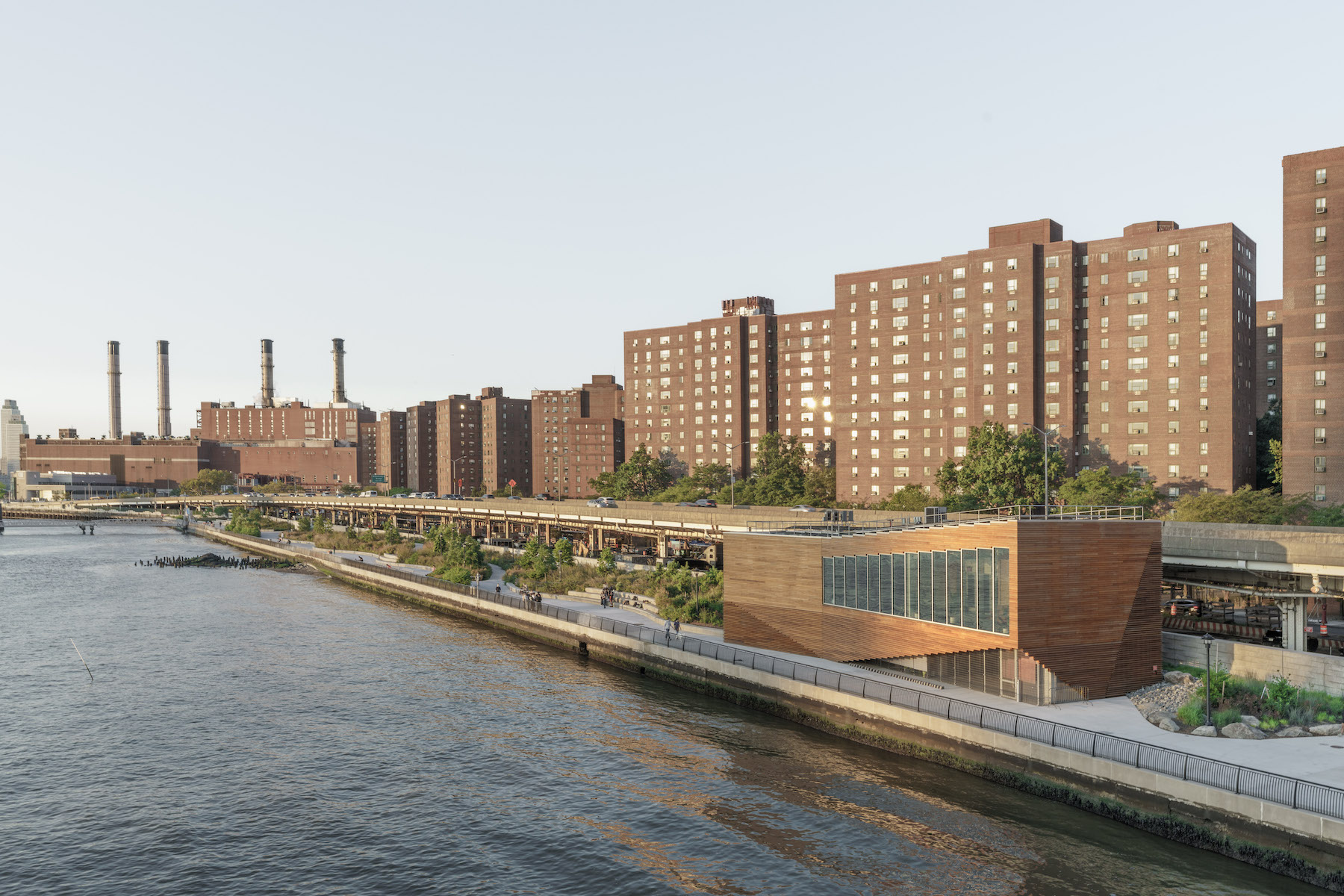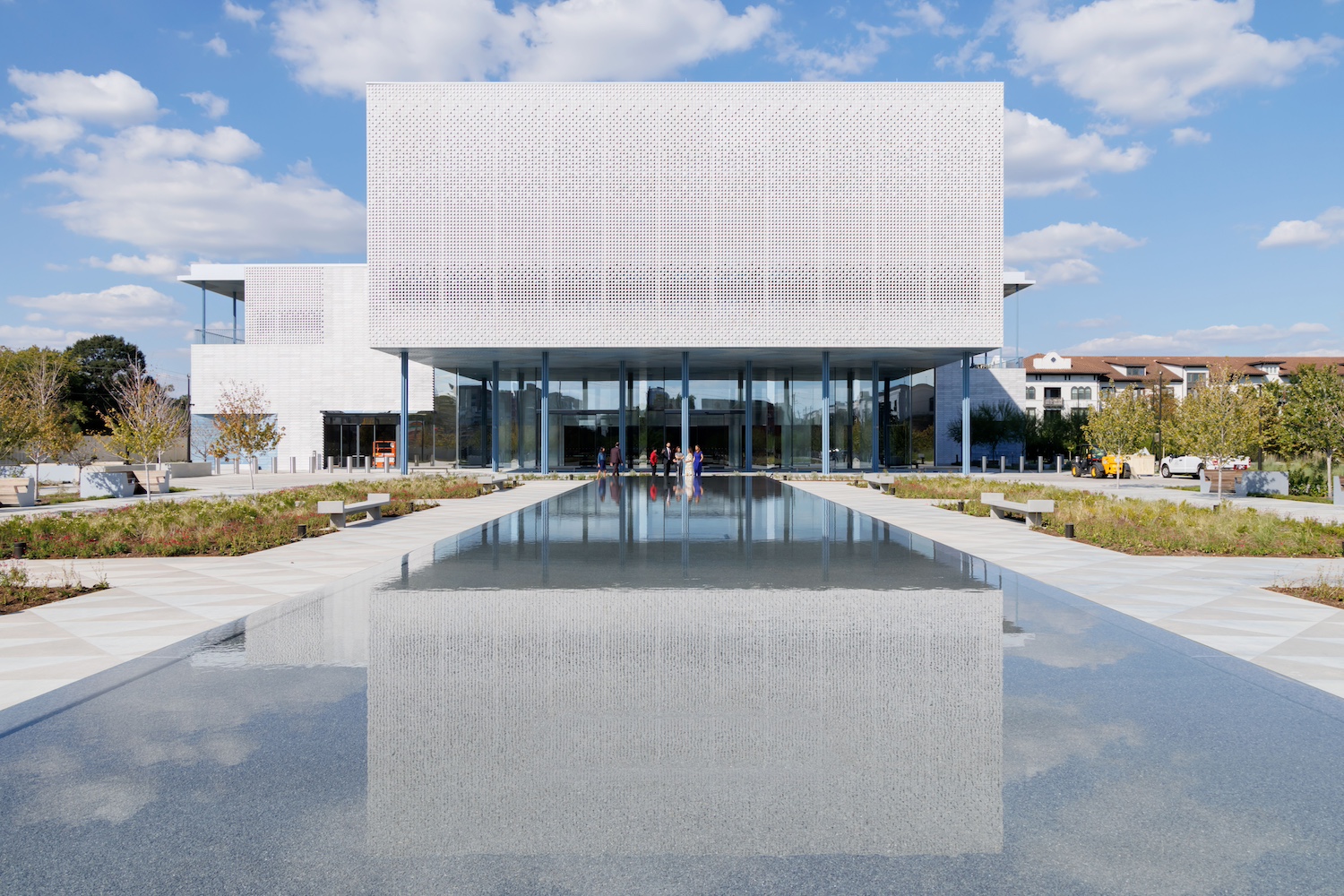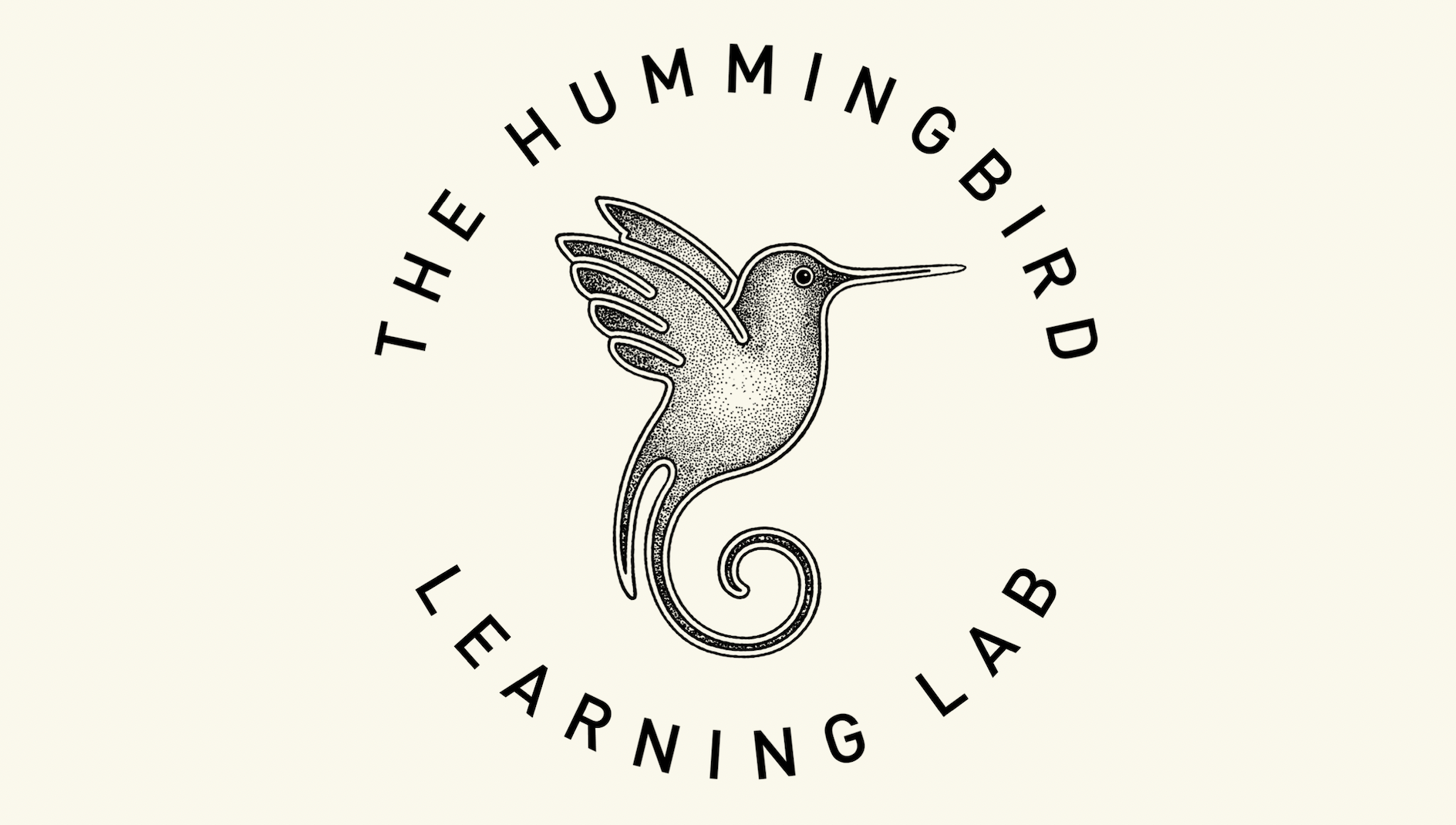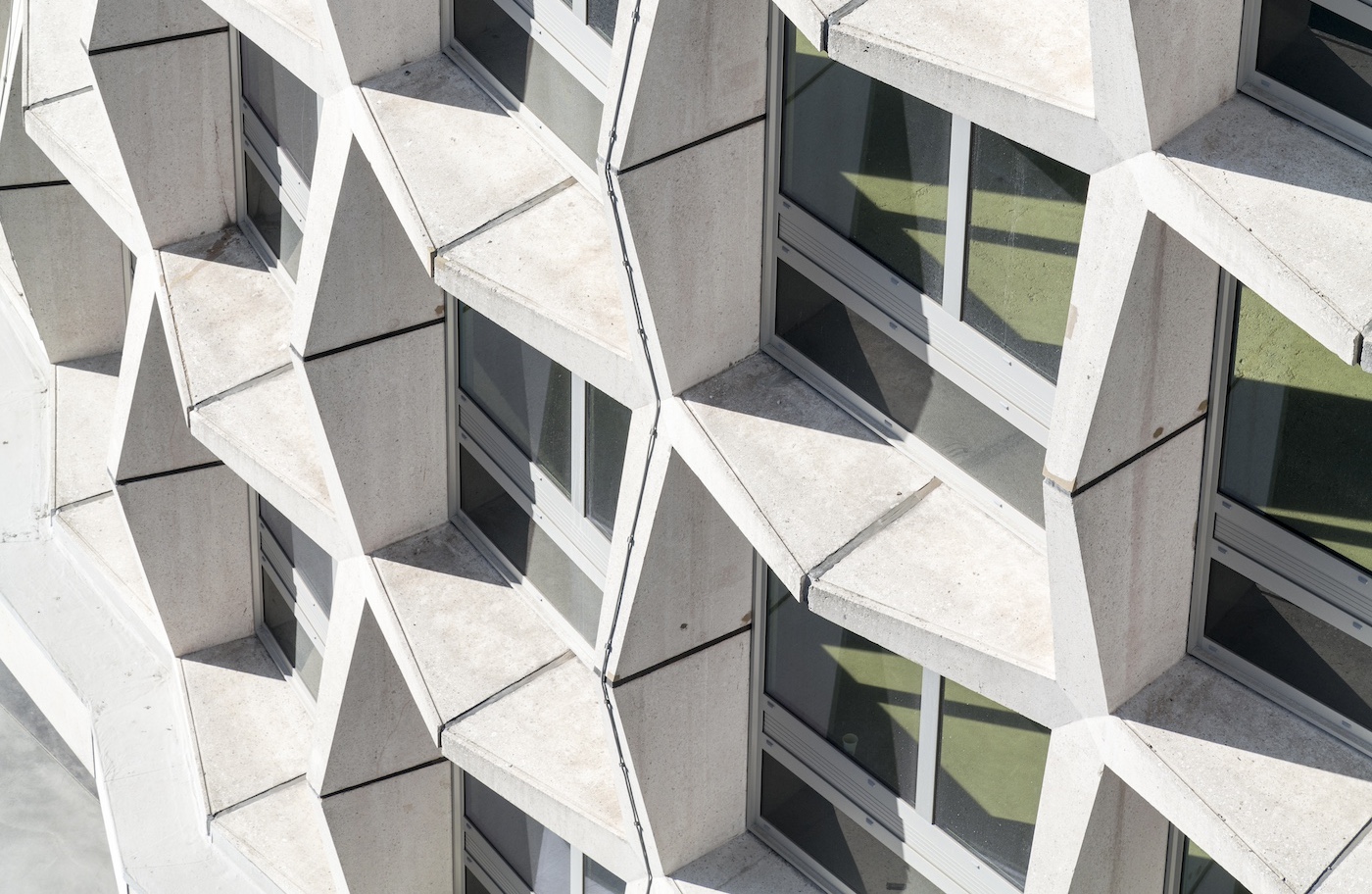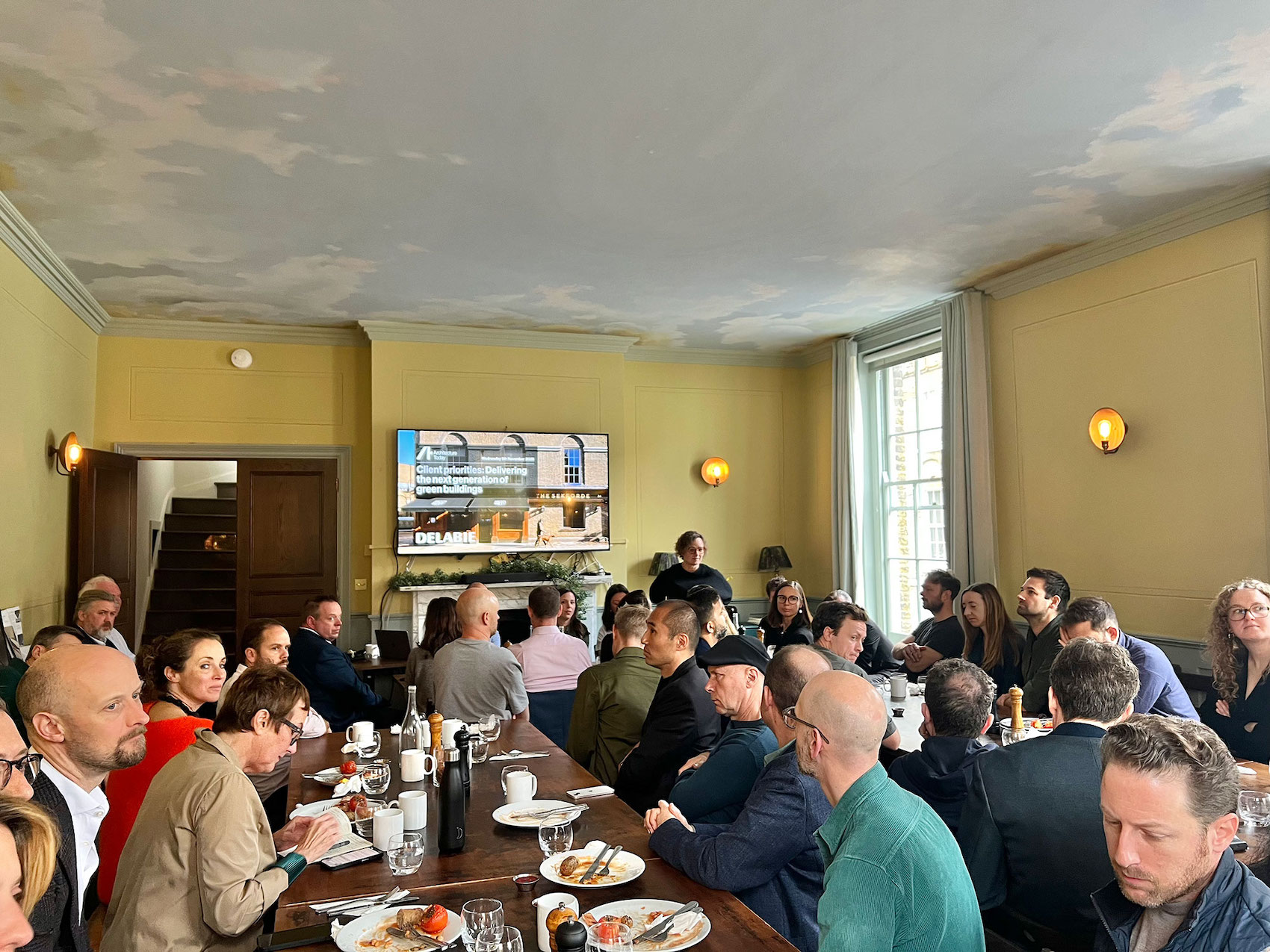Winners of the 2025 RIAS Emerging Practice Award, Islander Architects, speak to AT about the benefits of an interdisciplinary practice, their involvement in HouseEurope!, and how this campaign has influenced them as architecture educators.
Photos
Ste Murray, Peter Molloy, Islander Architects, Ste Murray, Brian Cregan
Islander Architects seems to toe several interdisciplinary lines. How would you describe your practice and what sort of projects interest you?
We describe Islander as a socially engaged design and research studio, we are interested in new methods of practice and aim to be agents of change. We like to practice architecture a bit differently, so split our time between traditional design projects and what we like to describe as ‘architecture beyond buildings’.This typically includes a variety of work including research, outreach, lecturing, advocacy & public engagement. You almost get dizzy spinning so many different methodologies for work! Our climate-focused approach prioritises the adaptation, extension & renovation of existing buildings. We’re very interested in gaining experience adapting and carefully renovating many of the 1960s, 1970s and 1980s building stock around Ireland. We’re particularly keen to get in touch with engineers, quantity surveyors and contractors who share similar interests to us regarding this period of our built environment.
How important is context to your work? And why have you decided to take this sociological approach to architecture and practice?
We believe in the broader social impact architecture and the built environment can have on our communities & places. We emphasise a creative & human approach to bring people, their stories & ideas together to make meaningful projects. Context is extremely important to our work, we even chose our name ‘Islander‘ as a reference to the cultivation of land employed by previous generations who dwelled on the Aran Islands. This notion of being resourceful and responding to the uniqueness of each project is something that we like to hold onto as we develop our practice.
What does a day-in-the-life in your shop-fronted studio look like?
You can’t campaign for town and village regeneration if you’re not willing to practice what you preach. So we purposely open up our shop-front studio in order to make visible the craft and processes of architecture as part of everyday life. We display our domestic, research and engagement projects in our window, but we must admit, our dog Ruby often gets more attention from passers by!
Demolition Take Down installation at the Irish Museum of Modern Art, 2024
What are the biggest challenges facing Irish architecture today?
Question marks being put forward by some government ministers about the value of design, especially in relation to apartment standards. It feels like there is a constant feeling that we are racing to the bottom, something which the Irish government seems to actively encourage. A separate concern is the prevalence of green-washing propaganda, within the commercial real estate sector, that promotes operational carbon statistics while conveniently ignoring the embodied carbon calculations for our existing buildings.
What opportunities do we have to combat these?
Luckily, there are a lot of opportunities to combat these. The onus is on us as architects to speak up about the inherent value of design and challenge the ‘business-as-usual’ approach to encourage both policy and behavioural changes across the industry.
We can look to our European counterparts for inspiration, embodied carbon is already a mandatory consideration in planning applications in some other countries and there are fantastic adaptive reuse examples to take guidance from.
HouseEurope! exhibition at the Irish Architecture Foundation, produced by Islander Architects and the IAF. The exhibition is on show until the end of November.
Tell us more about HouseEurope!. What is the argument behind the campaign? How did you get involved? Where do you feel Ireland sits in the momentum behind the movement? Are there any opportunities for people to get involved and help push the movement forward?
We were invited to be involved following our Demolition Take Down installation in IMMA in 2024, which depicted the 146 tonne volume of construction and demolition waste created in Ireland by the construction industry on behalf of each citizen over their lifetime. Along with the Irish Architecture Foundation, we became the Irish national organising members for the HouseEurope! campaign. This is a European Citizens’ Initiative that proposes to create incentives that could make the renovation and transformation of existing buildings the new norm. If we do nothing, we will have demolished 2 billion square meters of existing space in Europe by the year 2050. This is the equivalent of more than Paris or Berlin in their entirety. If we do nothing, we will continue to build billions of square meters of new space as a replacement for what is already there. We are of the opinion that demolition creates social, economic, environmental, and cultural problems coupled with a loss of homes, resources, and history.
Links to sign the campaign are available on the HouseEurope! website as well as our own website. In Ireland we need over 10,000 signatures. We currently have an exhibition as part of an extended Open House Dublin festival in Charlemont Square. The IAF have taken over this space and are hosting this exhibition which opens daily until the end of November. With films, posters and an Irish case study of a demolition story, at a time of climate crisis and housing shortage, this exhibition prompts collective local action against our self-destruction.
Do the beliefs behind this campaign influence how you both teach architecture? Is there a new direction architecture education should be taking?
A lot is already being done across the architecture schools in Ireland, we can thank the recent ‘Building Change’ programme for this. This revision to the national curriculum for architectural education foregrounded climate literacy and gave our community of practice some time to reconsider our priorities. As educators, we emphasise architecture as activism and encourage students to take creative climate action. We think more could still be done to break down barriers in education, encouraging a more holistic understanding of sustainable construction practices and public engagement. We would like to see less siloed learning and see more cross-disciplinary collaborations for students in the future.
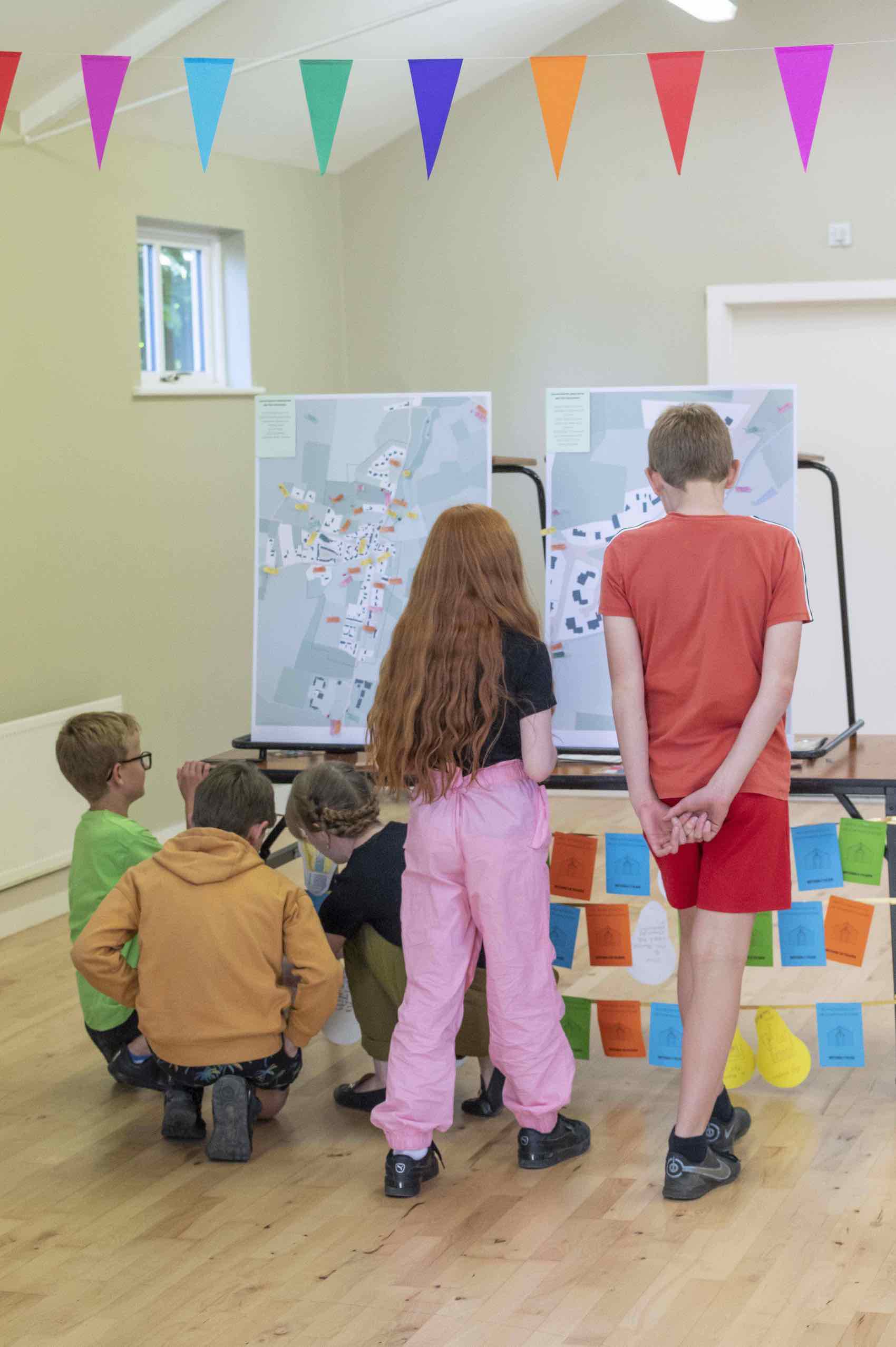
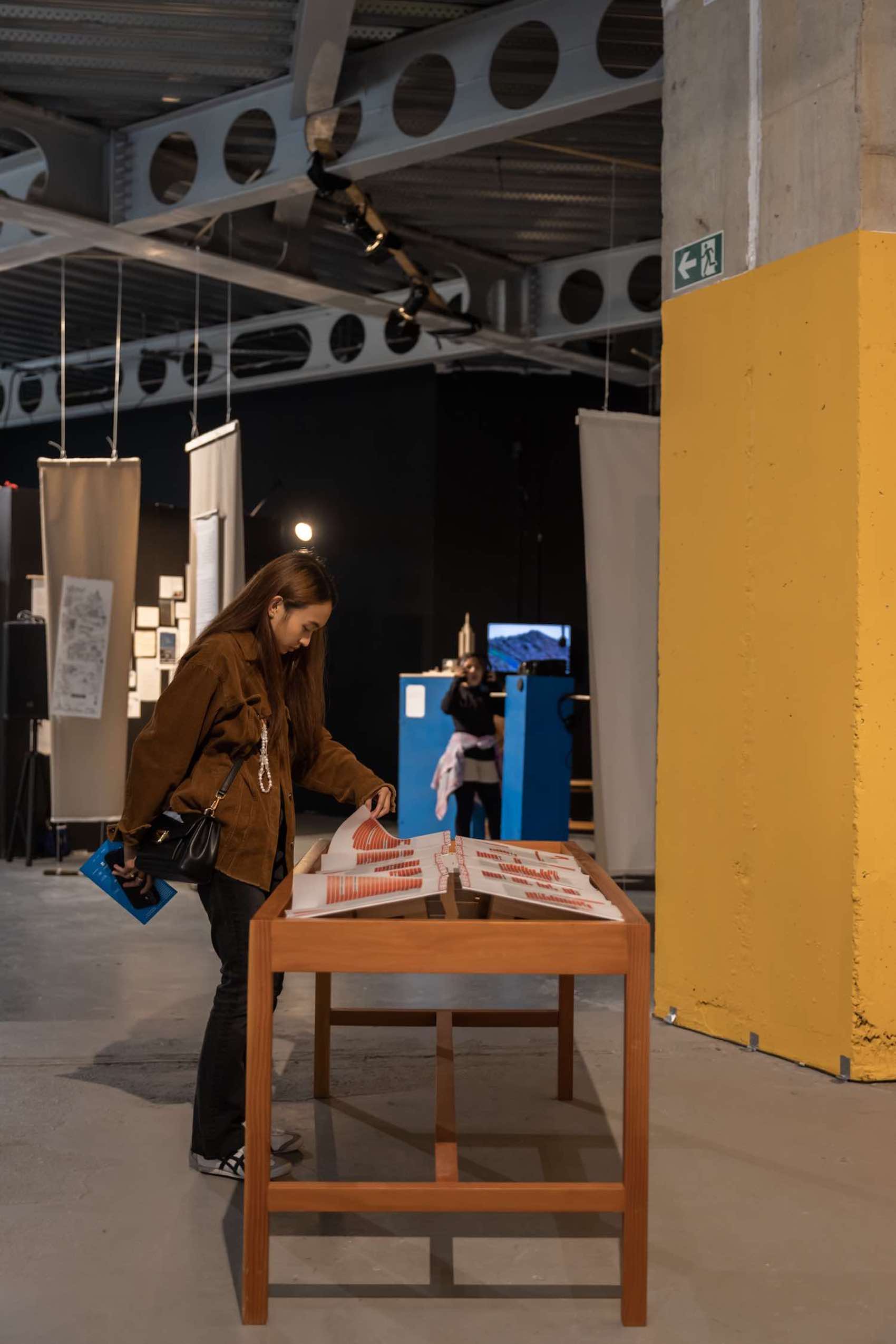
Left: Village ‘health check’ at Oldtown, North Country Dublin, in which Islander Architects worked with the local community to uncover issues faced and generate solutions.
Right: detail of HouseEurope! Exhibition at Open House Dublin 2025.
Click here to find out more about HouseEurope! and become one of the 10,000 signatures needed in Ireland.


